Thanksgiving dinner wouldn’t be the same without having gravy for the turkey. Sure, the day is all about preparing a solid Thanksgiving turkey recipe and fantastic sides like creamy mashed potatoes. But a great meal needs a sauce to bring it all together, and nothing does it like a homemade turkey gravy recipe. It adds richness and a silky-smooth texture to everything on the plate. Having gravy for turkey is an essential way to keep leftovers from going dry, too (especially if you’re recreating Ross Geller’s Thanksgiving sandwich).
Turkey Gravy Ingredients
- Drippings: These juices accumulate in the bottom of the pan when you roast meat like turkey. They’re rich and flavorful, but be sure to skim the fat before using them. Otherwise, your gravy can turn out slick and greasy.
- Turkey or chicken broth: Use homemade turkey stock if you have it on hand or any store-bought turkey or chicken broth. Just remember: Turkey gravy tastes best when you start with a flavorful liquid, so use the highest-quality broth you can.
- Roux: We create a roux with all-purpose flour and the skimmed fat from the drippings, transforming it into a smooth paste that will thicken the broth. If you don’t have fat from the drippings, use melted butter, bacon grease or oil. To plan ahead, use this homemade gravy trick and store your roux in the fridge or the freezer, where it’s good for several months.
Directions
Step 1: Separate the fat
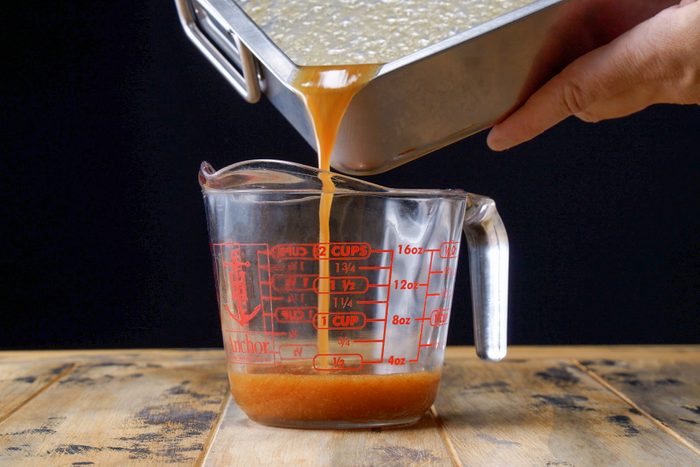
Pour the turkey drippings into a 2-cup measuring cup. Skim the fat, reserving 2 tablespoons and discarding the rest.
Step 2: Make sure you have enough liquid
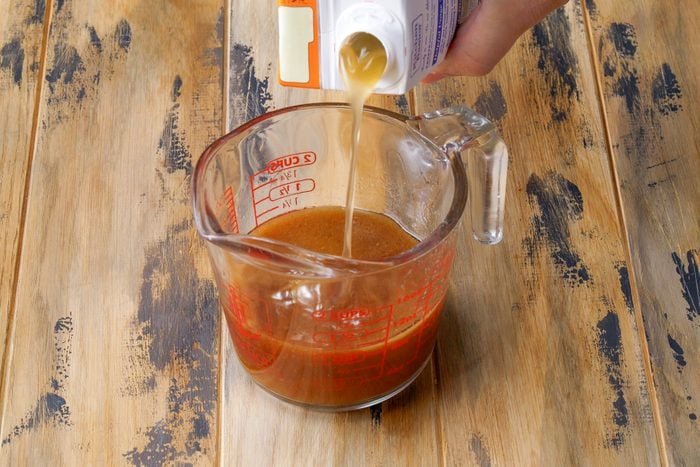
You’ll need 2 cups of liquid to make this turkey gravy recipe. If your drippings fall short, add turkey or chicken broth to the measuring cup until it reaches the 2-cup mark.
Step 3: Make the gravy
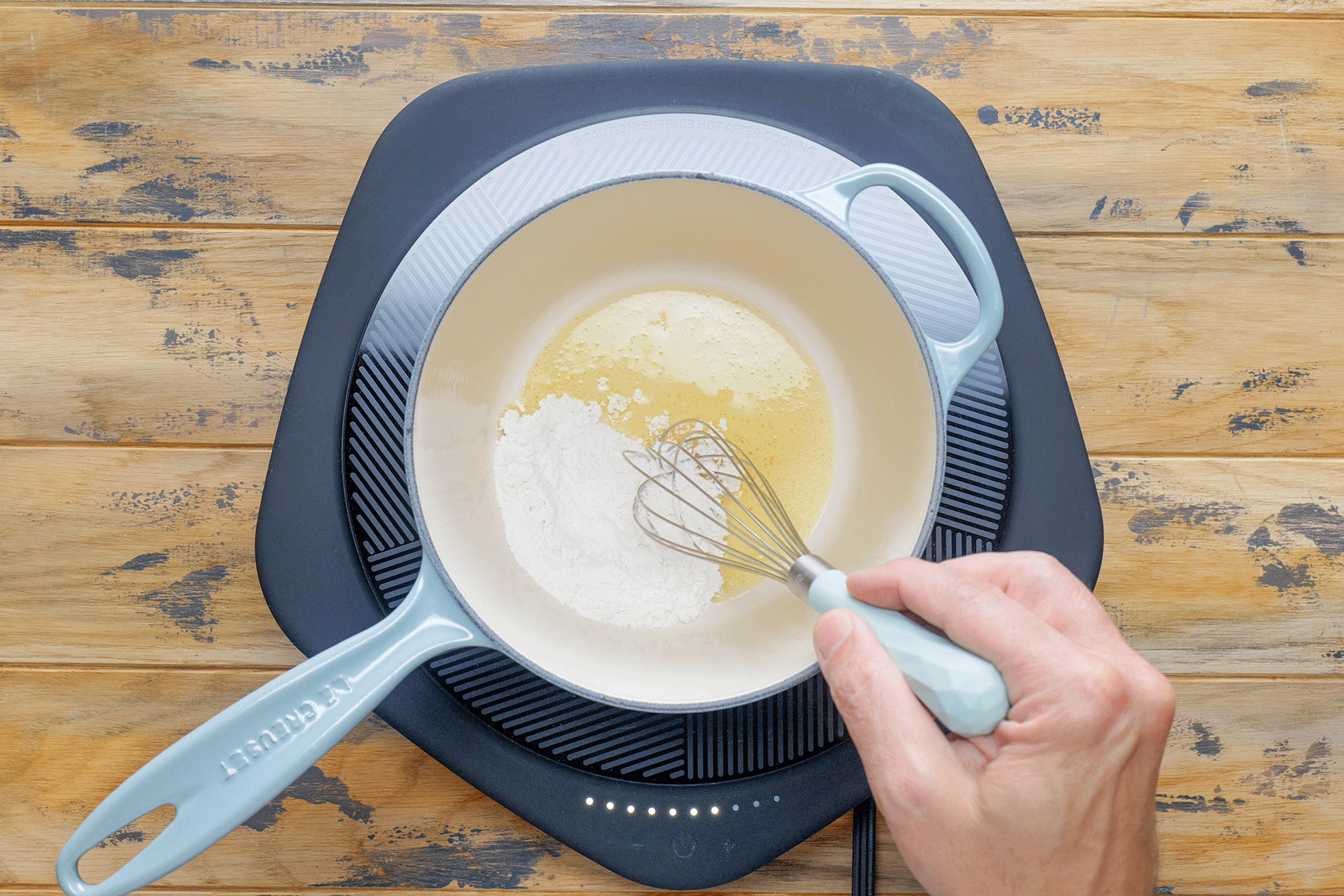
In a small saucepan, mix the flour with the reserved fat from the turkey drippings, stirring until smooth. Gradually stir in the drippings mixture and bring to a boil. Cook, stirring, until thickened, about two minutes. Season with salt and white pepper to taste.
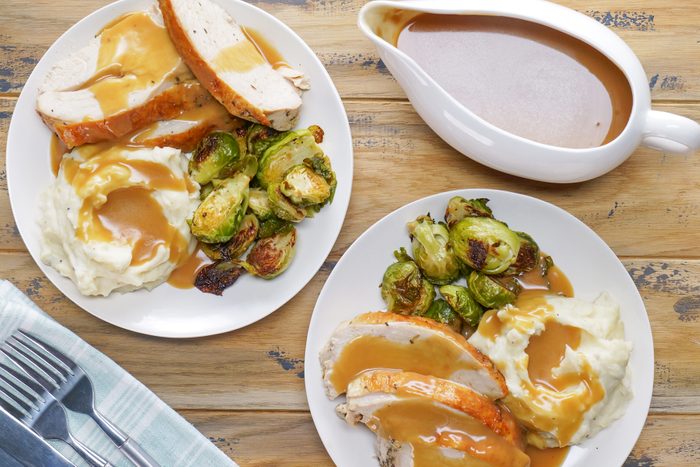
Editor’s Tip: If your gravy turns out lumpy, try pressing it through a fine mesh strainer or using an immersion blender to whip out any clumps. If you don’t mind a little texture, you can always add cooked chopped giblets to the pan to make turkey giblet gravy.
Turkey Gravy Variations
- Make it gluten-free: Instead of flour, make gluten-free turkey gravy by using another way to thicken the sauce, such as cornstarch or arrowroot.
- Augment the broth: Broth is traditional in turkey gravy, but you can use other flavorful liquids, too. Try mixing in a little wine, milk or half-and-half to replace some of the broth.
- Make it extra creamy: Stir in heavy whipping cream or a few cubes of butter at the end, swirling the pan until the addition is well incorporated.
- Introduce acidity: Gravy is velvety and rich, so adding an acidic ingredient will cut through the fatty, salty profile. Try adding a teaspoon of lemon juice or vinegar to balance out the flavors.
- Give it a flavor boost: Sweat some garlic and shallots in the pan before making the roux, or stir in fresh herbs like parsley, sage, rosemary or thyme. Other good additions are minced chipotle pepper, a few drops of liquid smoke or a dash of Worcestershire sauce.
- Use gravy for other dishes: Learning how to make gravy for turkey is a skill that’s helpful beyond holiday dinners. Many of our favorite slow-cooker recipes are better with gravy, and we love smothered dishes like chicken fried steak, biscuits and gravy, and poutine (one of our favorite ways to serve french fries).
How to Store Turkey Gravy
To make the gravy ahead (or to store leftovers), let it cool completely. Then, store it in an airtight container in the refrigerator. Use the gravy within two to three days.
To reheat turkey gravy, warm it in the microwave or in a saucepan over low heat. Gravy will thicken as it cools, so wait until it’s warm again before adding additional water or broth.
Turkey Gravy Tips
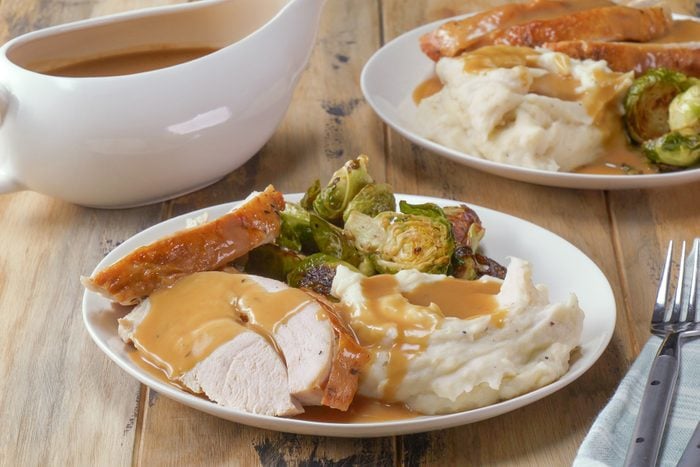
What is the secret to good gravy?
The secret to good gravy is using high-quality ingredients and the right technique. We look to Grandma for homemade gravy tips: start with a flavorful fat, whisk out the lumps and season the gravy before serving.
How do you make turkey gravy without drippings?
You don’t always end up with drippings—maybe you’re making a deep-fried turkey this year! If you don’t have them, simply substitute butter or cooking oil and use chicken or turkey broth as the liquid.
Can you use stock cubes instead of broth?
Of course! Just be sure to follow the directions on the package and give it a taste before seasoning so you don’t end up with a very salty gravy.
How do you fix gravy?
It happens: Gravy gets lumpy, turns out thin or separates if it gets too hot too quickly. Learn how to fix gravy, no matter what went wrong.




















